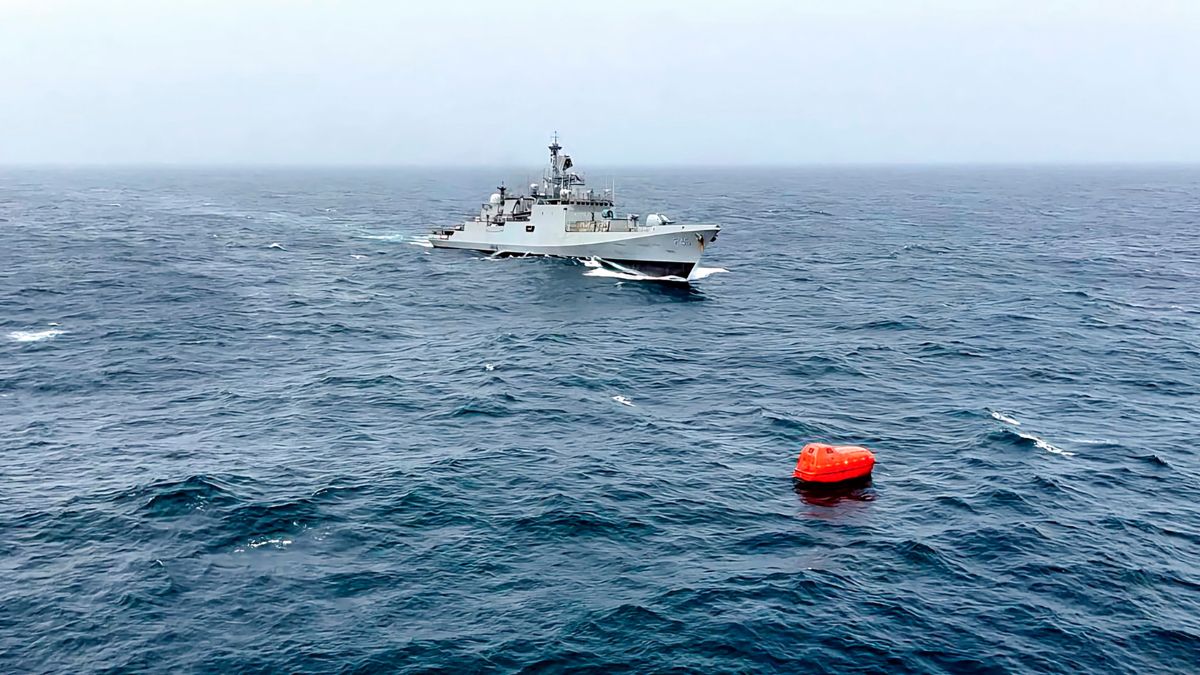) |
|
On November 21st, 2024, a significant maritime incident unfolded off the coast of Goa, India. An Indian fishing vessel, the Marthoma, carrying a crew of thirteen, collided with an Indian Navy Scorpene-class submarine. This collision highlights the complexities of maritime operations and underscores the importance of robust safety protocols in shared waters. The immediate aftermath saw the Indian Navy swiftly launch a search and rescue operation, deploying six ships and an unspecified number of aircraft to locate the missing crew members. The sheer scale of the response reflects the Navy's commitment to the safety of its citizens and the seriousness with which they approach such incidents. Eleven fishermen were successfully rescued, showcasing the effectiveness of the coordinated search efforts. However, the fate of the remaining two fishermen remains uncertain, prompting continued search and rescue operations. The involvement of the Coast Guard further amplifies the collaborative nature of the response, showcasing inter-agency cooperation in addressing maritime emergencies. The incident, while highlighting the need for improved safety measures, also underscores the challenges involved in balancing military operations with civilian maritime activities. The investigation into the cause of the collision is paramount in preventing future incidents.
The Scorpene-class submarine involved in the collision represents a significant asset within India's naval capabilities. These advanced submarines are equipped for a wide range of operations, including anti-surface and anti-submarine warfare, intelligence gathering, mine deployment, and area surveillance. Their sophisticated technology and strategic importance make their involvement in such an incident particularly noteworthy. The collision raises questions about the navigational protocols in place and whether sufficient measures were in place to prevent such an event. An in-depth investigation is necessary to determine the precise cause of the collision, identifying any shortcomings in existing procedures and recommending improvements to prevent similar incidents in the future. The investigation will need to consider various factors, including visibility conditions at the time of the collision, the navigational skills of the crews involved, and the communication systems employed. Transparency in the investigation's findings will be crucial in building public trust and ensuring accountability.
Beyond the immediate rescue efforts and the ongoing investigation, this incident underscores the broader implications for maritime safety and regulation. The increasing density of maritime traffic, coupled with the strategic importance of naval operations, necessitates robust mechanisms for preventing such collisions. Improved navigational awareness systems, enhanced communication protocols, and stricter adherence to established safety guidelines are vital. The incident also highlights the need for further investment in training and technology to enhance the safety of both naval vessels and civilian maritime traffic. This extends beyond merely addressing the technical aspects of navigation and communication, encompassing comprehensive training for both naval personnel and commercial fishing crews on best practices for navigating shared waters. Such training programs should integrate simulation exercises and real-world scenarios to prepare crews for various maritime contingencies. Moreover, the incident underscores the need for international cooperation in maritime safety, emphasizing the importance of shared protocols and consistent standards across different maritime jurisdictions. International collaboration can facilitate the exchange of best practices and provide a framework for coordinated responses to similar incidents.
The search for the two missing fishermen continues, underscoring the human cost of this incident. The families of the missing fishermen are understandably anxious and concerned about their loved ones' well-being. The ongoing efforts by the Indian Navy and the Coast Guard demonstrate a commitment to finding them. The psychological impact on the rescued fishermen should also not be overlooked. Post-incident support and counseling are vital for helping them cope with the trauma they have experienced. The incident necessitates a comprehensive review of safety protocols, enhancing training procedures and upgrading navigational technology. The goal is to establish a stronger safety net to mitigate the risk of such collisions in the future and guarantee the safety of both military and civilian vessels at sea. The Indian Navy’s response exemplifies their commitment to maritime safety, but this incident also serves as a poignant reminder of the inherent risks in maritime operations and the imperative for continuous improvement and collaboration across all maritime stakeholders.
Source: 2 missing after fishing boat collides with Indian Navy submarine off Goa coast, probe on
